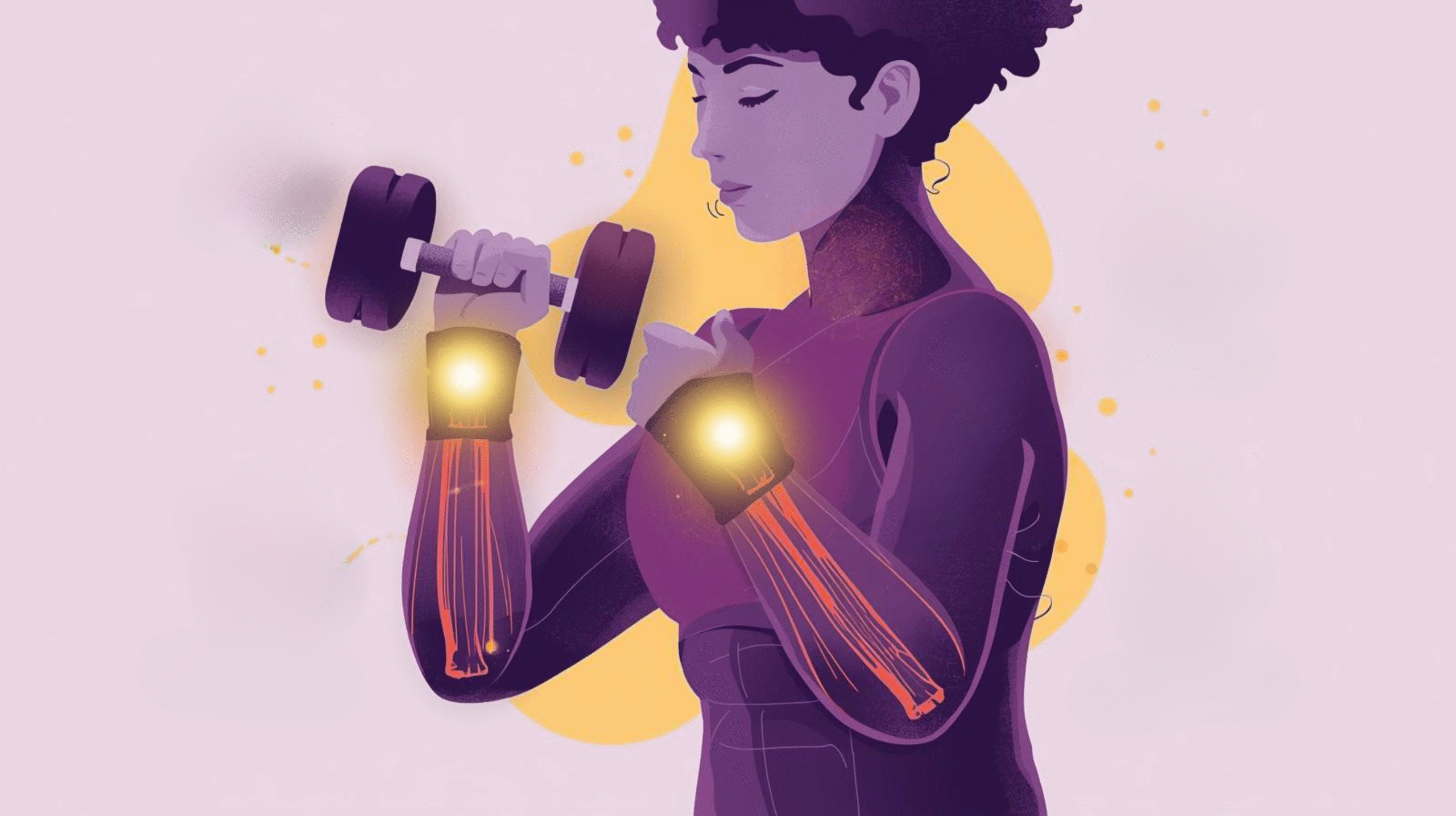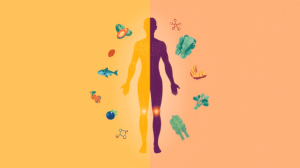The wrist joint is a highly complex structure consisting of eight carpal bones, the distal radius and ulna and a network of ligaments and tendons that allow fine motor control and weight-bearing capacity. Despite its small size, the wrist often endures substantial mechanical stress during gym activities such as push-ups, bench presses and overhead lifts. Repetitive or excessive loading can lead to ligamentous strain, tendinopathy or nerve compression syndrome.
In this article, wrist support braces have been increasingly adopted in sports medicine and rehabilitation. These devices are designed not simply as accessory muscles but as biomechanical tools that reduce harmful movement, stabilize the joint and enhance proprioception. This article examines the scientific basis of wrist supports, their indications, physiological benefits, risks and clinical considerations for athletes and gym goers.
What Is a Wrist Support Brace?
A wrist support brace, also referred to as a wrist orthosis, is an external device designed to stabilize the wrist joint by limiting unwanted motion while permitting functional use of the hand. Depending on material and design, braces may be rigid, semi-rigid, or flexible, each offering different levels of immobilization and support.
- Rigid braces: Commonly prescribed post-fracture or after surgical procedures. They immobilize the wrist in a neutral or slightly extended position to facilitate tissue healing.
- Flexible wraps: Often made of elastic or neoprene, these provide compression and partial stabilization, reducing proprioceptive error during dynamic movements.
- Velcro sports wraps: Designed for gym training, they allow controlled flexion but restrict excessive dorsiflexion (>70°), which is associated with ligament strain during bench pressing and push-ups.
Thus, wrist support braces function as an external stabilizing scaffold, offloading mechanical stress from the intrinsic ligaments and tendons of the carpal complex.
Comparison of Rigid vs. Flexible vs. Velcro Braces
| Feature | Rigid Brace | Flexible Brace | Velcro Brace |
| Material | Hard plastic/metal | Soft fabric/neoprene | Fabric + adjustable velcro |
| Support Level | Maximum | Low to moderate | Moderate to strong |
| Mobility Allowed | Minimal (restricts mobility) | High (allows movement) | Adjustable but limited mobility allowed |
| Best For | Post-injury, fractures | Mild pain, prevention | Day-to-day, customizable fit |
| Comfort | Bulky, may get hot | Lightweight, breathable | Depends on tightness |
| Ease of Use | Needs adjustment | Simple slip-on | Easy to put on/remove |
| Adjustability | Usually fixed | Limited | Highly adjustable |
| Typical Wear Time | Short-term or as recommended by doctor | Daily & preventive | Daily, sports, work, sleep |
| Cleaning | May have removable liners | Hand washable | Hand washable |
When Should You Use a Wrist Support Brace?
1. Carpal Tunnel Syndrome
Carpal tunnel syndrome results from compression of the median nerve within the carpal tunnel, often aggravated by repetitive flexion–extension activities. Neutral-position wrist orthoses have been shown to reduce nocturnal paresthesia and improve nerve conduction velocities.
2. Wrist Sprains and Strains
Ligamentous sprains occur when excessive force stretches or tears carpal ligaments. Bracing restricts the range of motion, allowing collagen fibers to repair under reduced tension, thereby enhancing ligament healing rates.
3. Post-Surgical Recovery
Following procedures such as carpal tunnel release, distal radius fixation, or ligament repair, braces maintain joint alignment and prevent accidental shear stress on healing tissues. Clinical guidelines recommend immobilization for 2–6 weeks depending on the intervention.
4. Sports and Gym Training
In athletic contexts, wrist supports are widely used to:
- Bench Press: Limit dorsiflexion, decreasing strain on the volar radiocarpal ligaments.
- Overhead Press: Maintain neutral alignment under vertical loading.
- Push-Ups and Planks: Distribute compressive forces, reducing articular cartilage stress.
- Olympic Lifting: Provide stability during high-velocity movements, minimizing risk of hyperextension and sprains.
Beyond gym settings, braces are also employed in racket sports, boxing, gymnastics, and other high-repetition sports that demand repetitive wrist loading.
5. Everyday Ergonomic Support
Chronic wrist pain is increasingly reported among office workers, gamers, and drivers due to repetitive microtrauma and poor ergonomics. Lightweight braces improve joint proprioception and reduce cumulative strain on tendons and nerves, serving as a preventive measure.
Benefits of Wrist Support Braces
1. Analgesic Effect (Pain Relief)
Immobilization reduces stimulation of nociceptors in inflamed ligaments and tendons. Compression enhances local circulation, accelerating the clearance of inflammatory mediators.
2. Joint Stabilization
By restricting excessive dorsiflexion and radial–ulnar deviation, braces minimize ligament loading and prevent microtears, especially during high-intensity resistance training.
3. Reduced Swelling and Inflammation
Controlled compression assists in venous return and lymphatic drainage, decreasing edema and improving recovery in acute soft tissue injuries.
4. Protection During Recovery
Braces function as a secondary stabilizer, compensating for weakened intrinsic stabilizers post-injury. This “guardrail effect” reduces the risk of reinjury during daily activity or rehabilitation exercise.
5. Improved Functional Capacity
Patients with chronic wrist instability report enhanced ability to perform tasks such as gripping, lifting, and typing when using braces, suggesting improved functional outcomes.
How to Choose the Right Wrist Support Brace?
Selecting a proper wrist support brace comes down to your individual needs, including the injury type, daily demands and activity, and sought comfort.
- Determine Your Purpose
Do you need it to recover from an injury, manage chronic pain, and provide support while participating in sports, or while performing repetitive or work tasks (such as typing or lifting)? More rigid braces are typically needed for severe sprains and fractures. You may more regularly use a flexible sleeve or Velcro strap for support, comfort, prevention, or minor injuries.
- The Level of Support
- Rigid: It keeps the motion nearly impossible and provides solid stabilization. Appropriate if you are recovering from an acute injury, post-op, or if you experience significant instability.
- Flexible: It is made of stretch fabric or neoprene. Provide a decent range of motion and gentle compression, suitable for mild pain or swelling, and prevention from injury.
- Velcro: Adjustable, and may serve as a hybrid of a rigid brace and flexible brace. Awesome for customizing fit support and tightness.
- Comfort and Fit
- Choose fabrics that are breathable, to the extent you will wear the device for a prolonged period.
- Look for different sizes, and adjustable straps, to relieve tightness, but make sure it fits broadly.
- Fit and size may be determined by trying on or consulting with a clinician for braces for specific medical indications.
- Usability and Maintenance
- Easily put on or take off Velcro wraps; flexible sleeves stretch on easily.
- Although rigid braces can have more bulk and adjustments need to be made, they provide the best stability.
- Scrutinize cleaning directions- most flexible, and Velcro braces are hand washable, but riffed braces may have removable liners.
- Aesthetics and Toward Activity
- If you are at your job or sleeping, use wrist support braces that are lightweight and can often be more comfortable for everyday wear.
- If you are even more active, low-profile options are a good option as they won’t hinder your movement during workouts, appropriate leisure, or during your work-day.
Risks and Limitations of Wrist Supports in Gym Training
While braces provide multiple benefits, over-reliance presents several drawbacks:
- Muscle Weakness: Long-term use may reduce adaptive strengthening of wrist flexors/extensors, leading to dependency.
- Limited Efficacy in Severe Injuries: Braces cannot substitute for medical management of fractures, ligament tears, or inflammatory arthropathies.
- Reduced Range of Motion: Prolonged immobilization can result in stiffness and reduced proprioceptive acuity.
- Dermatological Issues: Sweat accumulation and friction may cause dermatitis or skin maceration without appropriate hygiene.
Thus, wrist braces for gym should be viewed as adjuncts to training and rehabilitation, not as standalone treatments.
Who Should Use Wrist Supports in the Gym?
- Weightlifters and Powerlifters handling high loads.
- CrossFit Athletes exposed to repetitive strain.
- Bodybuilders seeking joint stability during hypertrophy training.
- Beginners developing wrist strength gradually.
- Individuals with prior injuries or surgeries requiring secondary support.
Sports medicine practitioners also recommend braces for athletes in racket sports, boxing, and gymnastics where repetitive impact stresses the wrist joint.
Final Thoughts
From a sports science perspective, the wrist joint is both highly mobile and highly vulnerable. Wrist support braces, when used appropriately, offer biomechanical stabilization, proprioceptive feedback, and injury risk reduction. However, they must be integrated into a broader approach that includes proper lifting technique, progressive overload, and wrist-strengthening exercises.
While braces provide measurable benefits in pain relief and stability, reliance without concurrent strengthening may hinder long-term joint resilience. Ultimately, braces are not curative devices but adjunctive tools, bridging the gap between injury prevention, rehabilitation, and performance enhancement.
Frequently Asked Questions:
1. Can beginners use wrist wraps in the gym?
Yes, especially if you’re lifting weights heavier than you’re used to. Just avoid relying on them for every rep.
2. Are wrist supports necessary for push-ups and bench press?
They’re not necessary for everyone, but if you experience wrist pain or instability, they can make a huge difference.
3. Should I use wrist straps for deadlifts?
Yes, especially when your grip gives out before your back or legs. But don’t rely on them all the time—train grip strength too.
4. Can wrist supports prevent carpal tunnel in gym training?
They can reduce strain but won’t cure or prevent carpal tunnel completely. Ergonomics and medical advice are still key.
5. Is it safe to wear wrist support every workout?
It’s safe, but not recommended. Use them strategically to avoid over-reliance.
References
- Brorsson, S., Nilsdotter, A., Thorstensson, C., & Nordenskiöld, U. (2009). Effects of splinting on pain and grip strength in patients with rheumatoid arthritis: A randomized controlled trial. Arthritis Care & Research, 61(10), 1347–1353. https://doi.org/10.1002/art.24703
- Huisstede, B. M. A., Randsdorp, M. S., Coert, J. H., Glerum, S., & Koes, B. W. (2010). Carpal tunnel syndrome. Part II: Effectiveness of surgical treatments—a systematic review. Archives of Physical Medicine and Rehabilitation, 91(7), 1005–1024. https://doi.org/10.1016/j.apmr.2010.03.002
- Kocjan, J., & Sarabon, N. (2020). The effect of kinesiology taping, compression, and wrist orthoses on wrist pain and function in athletes: A systematic review. Journal of Hand Therapy, 33(3), 353–363. https://doi.org/10.1016/j.jht.2019.03.004
- Palmer, A. K., & Werner, F. W. (1984). Biomechanics of the distal radioulnar joint. Clinical Orthopaedics and Related Research, 187, 26–35. https://doi.org/10.1097/00003086-198407000-00004
- Rupp, M., Alt, V., & Seebach, C. (2020).https://doi.org/10.1186/s40798-020-00273-8























